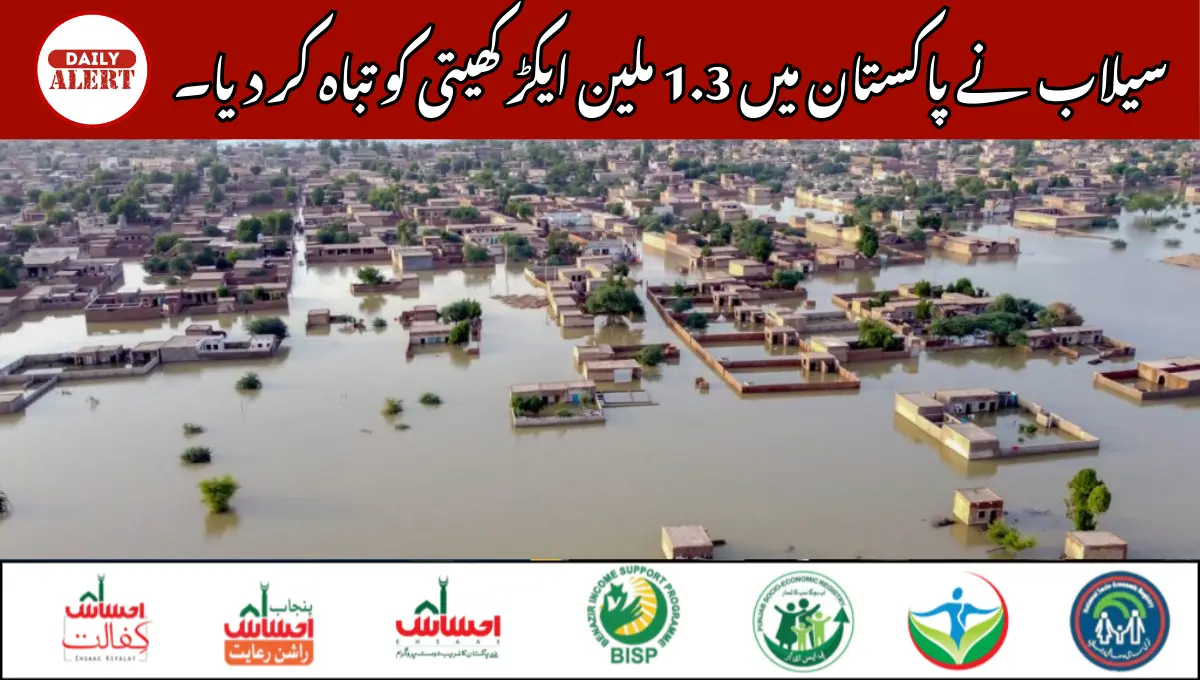Pakistan is facing yet another devastating climate disaster as recent floods have destroyed more than 1.3 million acres of farmland across the country. The destruction has not only displaced farming communities but also raised concerns over food security, rising inflation, and long-term agricultural sustainability. Authorities and experts warn that the loss of crops could further burden an already struggling economy.
Flooding worsens agricultural crisis
According to initial assessments from provincial authorities and disaster management agencies, the heaviest damage has been reported in Sindh and Punjab, Pakistan’s main agricultural provinces. Rice, cotton, sugarcane, and vegetable crops have been washed away, leaving thousands of farmers without livelihoods. Livestock losses have also been reported, compounding the crisis for rural families who depend on farming and herding for survival.
Agriculture is a vital sector for Pakistan, contributing nearly 20 percent to the national GDP and employing about 40 percent of the workforce. Experts fear that the destruction of 1.3 million acres of farmland will reduce crop yields drastically, forcing the country to rely on imports for essential food supplies. This situation comes at a time when global food prices remain unstable, further heightening the risk of shortages and inflation.
Climate change and recurring disasters
Pakistan has been experiencing increasingly severe climate-related disasters in recent years. The 2022 floods, which were labeled among the worst in the country’s history, submerged one-third of the nation and affected 33 million people. Experts argue that climate change, coupled with inadequate infrastructure, poor drainage systems, and rapid urbanization, has intensified the impact of seasonal rains.
Scientists have long warned that Pakistan is among the top 10 most vulnerable countries to climate change. Rising temperatures, unpredictable monsoon patterns, and glacial melt in the north continue to increase the frequency and severity of floods. Without significant investment in climate resilience and water management systems, such disasters are likely to occur again, putting millions of people and acres of farmland at risk.
Humanitarian and economic impact
Beyond the destruction of crops, the floods have displaced thousands of families, damaged homes, and destroyed critical infrastructure including roads and irrigation channels. Humanitarian organizations are warning of food shortages, malnutrition, and waterborne diseases if immediate relief is not provided.
The economic impact is also severe. Pakistan’s economy, already under pressure from high debt and inflation, is likely to face further challenges in stabilizing food prices and supporting affected farmers. With cotton crops destroyed, the textile industry, a major contributor to exports, may also experience disruptions in production.
Future outlook
The current disaster underscores the urgent need for Pakistan to invest in climate adaptation, sustainable farming, and disaster preparedness. Experts recommend improving river embankments, modernizing irrigation systems, and providing crop insurance schemes to protect farmers from recurring climate shocks.
International organizations and donor agencies have offered support in the past, but long-term solutions require stronger policies, effective governance, and collaboration between the government, private sector, and local communities. As the country works to recover from the latest floods, the question remains whether Pakistan can build resilience fast enough to protect its people and agriculture from future climate disasters.
Also Read More: TouchPoint’s CADEPO Enables Over PKR 5 Billion in Deposits for Faysal Bank Retail Customers

